

The chefs over at Labor 411 have come up with a host of Halloween recipes from union-made ingredients. Treats include Mummy Dogs, No-Bake Marshmallow Witches, Rummy Worms, and our favorite, Graveyard Rice Krispies Treats. We’ve included the easy-to-follow recipe below.
And if you still haven’t purchased treats for tonight’s trick-or-treaters, check out Labor 411’s list of union-made candy!
Graveyard Rice Krispies Treats
Ingredients (purchase from your local unionized grocery store):
4 cups Kraft miniature marshmallows
¼ cup Land O Lakes butter, cubed
6 cups Kellogg’s Rice Krispies cereal
12 Oreos
1 tube white decorating gel frosting
1 can Betty Crocker chocolate frosting
Halloween sprinkles
Instructions:
1. In a large saucepan, combine and stir marshmallows and butter over medium-low heat until melted.
By now British films that combine gritty economic issues with musical set pieces have become their own genre. These movies, often based on historical fact, typically involve the seemingly crazy schemes of a plucky band of commoners to save a dying industry or rescue a besieged group of workers. Pride is the most recent descendent of Brassed Off, The Full Monty, Kinky Boots and Made in Dagenham. It’s the story of the fateful 1984-85 coal miners’ strike, during which Prime Minister Margaret Thatcher managed to cripple the National Union of Mineworkers.
Stephen Beresford’s screenplay follows the efforts of Mark Ashton (Ben Schnetzer), a young gay militant, to rally his LGBT comrades to collect funds for the increasingly harried miners. He finds only a few adherents, but this energized band, which includes a closeted young student named Joe (George MacKay), a sarcastic lesbian, Steph (Faye Marsay) and a flamboyant actor played by Dominic West,

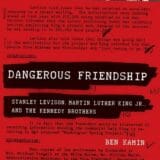
FBI Director J. Edgar Hoover tried to erase the name of Stanley Levison from civil rights history in the 1960s. Now historian Ben Kamin is putting Levison firmly back into the historic record with his new book, Dangerous Friendship: Stanley Levison, Martin Luther King, Jr., and the Kennedy Brothers.
Levison was a successful Jewish businessman and member of the American Communist Party until 1956, when the Soviet invasion of Hungary left him disillusioned. He refocused his organizing skills, business and labor contacts, energy and intelligence to support the work of Martin Luther King Jr., helping to found, manage and fund King’s organization, the Southern Christian Leadership Conference. In the process, Levison became an intimate friend of King and part of the tight circle of confidants who helped develop King’s campaigns and sustain him emotionally.
What drew Levison, and hundreds of other American Jews like me,
» Read more about: Book Review: MLK’s Dangerous Friendship »
In this uncertain post-recession era, economic inequality seems to be the only thing you can count on being in full supply. It’s certainly a subject that’s increasingly on people’s lips – thanks in no small part to Jacob Kornbluth’s 2013 documentary, Inequality for All. The film, wryly narrated by economist Robert Reich, lays out Reich’s astute perspective on how our country has arrived at the point where 400 Americans own more wealth than the entire bottom half of the country combined.
Sunday the Southern California Chapter of the American Civil Liberties Union will screen Inequality for All, an event that will serve as a refresher course for some and an eye-opener for others who have not seen the film. Afterwards, Harold Meyerson, American Prospect editor-at-large and Washington Post columnist, will offer his always lively insights into what’s happened since the documentary’s premier, along with a discussion of commercial property tax reform.
» Read more about: Harold Meyerson Speaks on ‘Inequality for All’ »
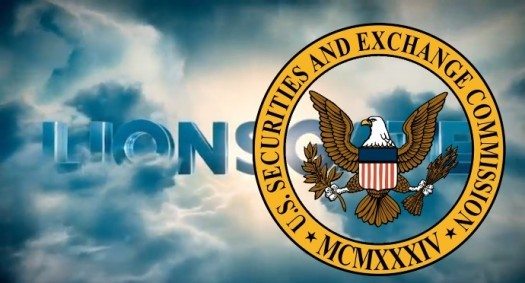
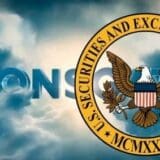
Today is a big day for Lionsgate Entertainment, and we want to help celebrate. That’s why on the occasion of the annual shareholder’s meeting of this hugely successful film company (taking place right now in Toronto), AFM musicians are proud to present a musical tribute to Lionsgate and its executive leadership – a little number we call “Right Here at the Top.”
AFM musicians created the song as part of our efforts to draw attention to Lionsgate’s destructive offshoring of musical scoring work, even as it simultaneously takes millions in tax dollars — moneys intended to enrich our communities. Of course the story told by the CEO in our song may not be exactly the story told by Lionsgate’s executives to their shareholders. But wait –– what’s that? The executives at Lionsgate fail to provide important information to their beloved shareholders?


There is a long tradition in the United States, and perhaps most of the world, of binary thinking when it comes to work.
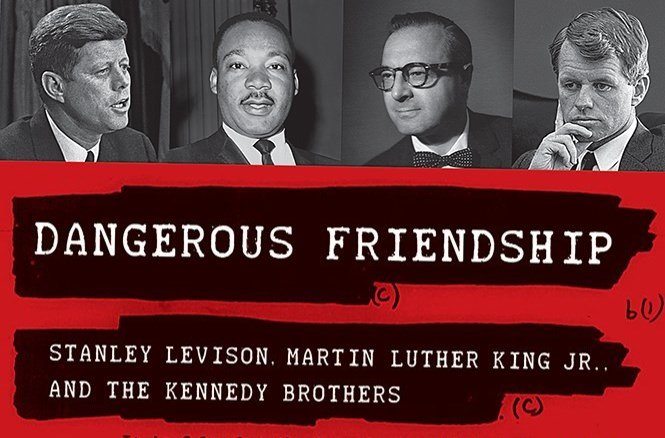

Most students of the 1960s may know about the FBI’s obsessive surveillance of Martin Luther King Jr. and how the bureau’s shadowing and bugging of the Southern Christian Leadership Conference’s president would lead federal agents to infiltrate the civil rights and peace movements. Now, a new book by Ben Kamin throws a spotlight on the man whose close friendship and collaboration with King provoked J. Edgar Hoover’s wrath and paranoia. Dangerous Friendship analyzes the relationship between King and Stanley Levison, a lawyer and wealthy businessman with a radical past. The book tells how Levison, known as King’s ghostwriter and closest white friend, advised King on strategy and raised righteous amounts of money for his cause; the story also shows how their friendship prompted the Kennedy White House to force King to shun Levison for more than a year.
Kamin, a nationally known rabbi, also explores how Levison’s personal solidarity with African American struggles reflected a traditional Jewish embrace of equality and social activism.
» Read more about: Tonight: Ben Kamin on MLK’s “Dangerous Friendship” »

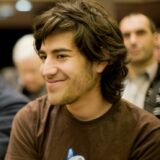
The Internet’s Own Boy —the title says it all. Writer-director Brian Knappenberger‘s weak and propagandistic hagiography is as infantilizing to its audience as it is to its subject, and adds no luster to the memory of pioneering programmer and information activist Aaron Swartz, who was 26 when he took his own life in January 2013.
At the time of his suicide, the federal government was prosecuting Swartz on computer crime charges in connection with downloading (but never distributing) nearly five million academic journal articles from the online repository JSTOR, which he had accessed via a computer in a supply closet at MIT. The indictment was patently ludicrous; JSTOR itself had declined to press charges against Swartz. But the Justice Department was determined to make an example of him anyway, as it has repeatedly done with other hackers whom it has harassed and even jailed. That Swartz was gravely wronged by prosecutors Carmen Ortiz and Stephen Heymann is as plain as day.
This is the first in an occasional series of interviews with California business leaders.
When it comes to shaping the conversation about business in Southern California, few people wield as much influence as Charles Crumpley. As editor of the Los Angeles Business Journal, Crumpley oversees one of the more impressive news operations in the region, garnering numerous awards for the publication during his eight-year tenure. And while the Business Journal is very much a tribune for conventional ideas about business and the economy, Crumpley has been remarkably open-minded about printing other perspectives, including those of activists with a sharp critique of corporate America.
Capital & Main sat down with Crumpley, whose 30-year journalism career has included stints in Kansas City and New Orleans, in the Business Journal‘s Miracle Mile offices to discuss economic inequality,
» Read more about: A Talk With the L.A. Business Journal’s Charles Crumpley »

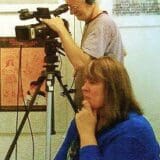
For Oneil Cannon, breaking the color line of L.A.’s lily-white printers’ union didn’t simply mean facing a night of scalding verbal abuse during his first union hall meeting – moments before it began he’d been refused service at knifepoint at a nearby restaurant. Jackie Goldberg says her activist’s DNA was shaped less by Berkeley’s celebrated Free Speech Movement than by a little-noticed women’s conference held the year before the U.C. campus erupted. Peter Douglas’ journey from the frozen roads of war-torn Poland to Redondo Beach’s balmy Esplanade led the father of California’s Coastal Act to become a “radical pagan heretic.”
These and more than 40 other reminiscences by Southern California social activists have been recorded by Julie Thompson and her husband, Brogan de Paor, as part of an ambitious yet shoestring-funded project called the Activist Video Archive. So far the couple’s subjects have also included Haskell Wexler, Cheri Gaulke,
» Read more about: Setting the Record Straight: L.A.’s Activist Video Archive »


It was an incredibly busy and rewarding time last week at Netroots Nation in Detroit. Sifting mentally through the countless conversations, workshops, speeches, text messages, Tweets, business cards and campaign “swag” I’ve accumulated, I struggled to find a common thread.
Then I visited the Detroit Industry Murals — one of Diego Rivera’s most famous works of art. Rivera’s amazing fresco murals reflect ideas of duality: contrasting managers and workers, mechanized industry and the natural world, and the positive and destructive potential of science and technology. Rivera beautifully illustrated these concepts between 1932 and 1933 by painting images of biochemical weapons and passenger planes, female fertility figures with South and North American characteristics, doves and hawks, orderly production lines and fiery furnaces.
Then, it clicked. For me, Netroots Nation 2014 has been about the duality of art and war.
» Read more about: Netroots Nation in Detroit: The Art of War and the War of Art »

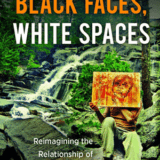
Talk about a big tent: Carolyn Finney’s new book looks at some important but unexplored terrain in our national parks and conservation movements – the relative absence of African Americans. Black Faces, White Spaces: Reimagining the Relationship of African Americans draws upon the legacy of slavery, Jim Crow laws, pop culture and the environmental justice movement to pose some provocative questions about the racialization of nature.
Was it a coincidence that Congress passed the Wilderness Act in 1964 – the same year as the signing of the Civil Rights Act? Why have environmental groups such as the Sierra Club and Audubon Society remained overwhelmingly white in their memberships? How are African Americans changing the dynamics of environmental preservation?
Finney, an assistant professor with U.C. Berkeley’s Environmental Science Department, will discuss her book and its findings on Tuesday, July 22, 7 p.m., at a signing at Eso Won Books,
» Read more about: Carolyn Finney Discusses ‘Black Faces, White Spaces’ »
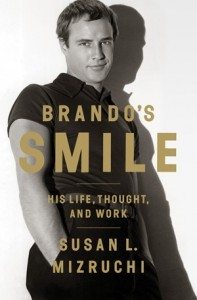
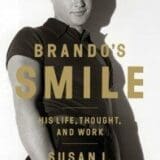
If you are even a semi-serious lover of film, then you probably have seen at least a few of Marlon Brando’s indelible performances in films such as A Streetcar Named Desire, The Godfather and Apocalypse Now, to name only a few. You probably also are familiar with Brando’s legendary appetites for women and food, the tragic arc of his family life and perhaps his controversial political stands.
What you likely don’t know – few do — is that the man widely regarded to be the greatest American actor of the 20th century had a brilliant, restless mind to go with his innate talent and stunning looks. No, Brando was not merely a hunk with a mysterious intuitive genius — he was a student of history and the human condition who read voraciously and wrote some of the most famous lines from his epic performances.
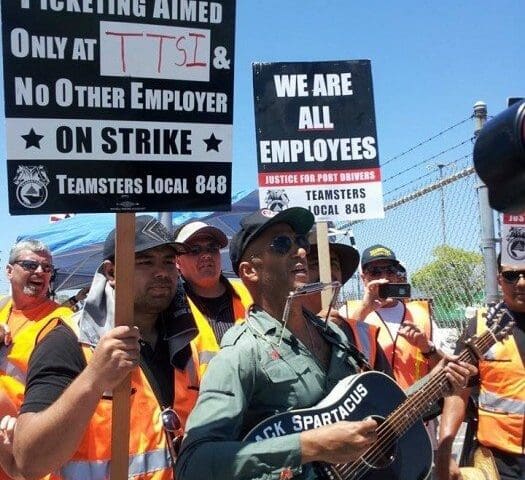
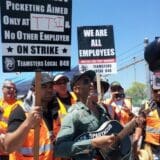
One hundred twenty truck drivers who haul freight to and from the twin ports of Los Angeles and Long Beach went on strike Monday against the three companies they work for. The work stoppage, which has no announced end date, was called to protest alleged retaliation by Green Fleet Systems, Total Transportation Services Inc. and Pacific 9 Transportation, as well as the drivers’ long hours and low wages. Perhaps more important, the strikers are motivated by their determination to end the companies’ practice of classifying drivers as “independent contractors” – a status that allows the firms to treat their workers as second-class citizens and to avoid contributing payroll taxes to the state and federal governments.
On Wednesday rock-and-protest icon Tom Morello showed up on Terminal Island to support the strikers. The Rage Against the Machine guitarist and Watchman singer strummed a guitar labeled “Black Spartacus”
» Read more about: Scenes From the Port Truck Driver Strike: Tom Morello Performs »
Film director Randall Miller (Bottle Shock), along with Jody Savin and Jay Sedrish, the producers of the ill-fated Gregg Allman biopic, Midnight Rider, have been indicted on charges of involuntary manslaughter and criminal trespass, the Hollywood Reporter and other sources reported Thursday morning. The charges were filed in a superior court in the state of Georgia, where a February 20 accident killed camera assistant Sarah Jones.
The 27-year-old Jones’ death occurred when a freight train unexpectedly rolled through a scene being staged on railroad tracks in the small town of Doctortown Landing. Her death, which became a cause celebre among Hollywood safety activists, threw a spotlight on the dangers faced by below-the-line crew members as production companies large and small have taken shortcuts to keep down costs. With producers – particularly those involved in reality TV shows –increasingly adopting an accidents-will-happen attitude toward the safety of their crews,
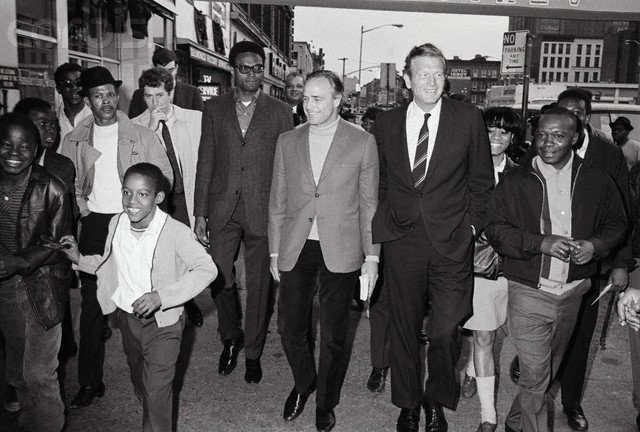
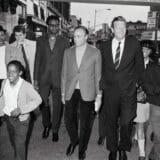
“The enemy of the actor is the mind,” Marlon Brando once wrote in notes he compiled for a 2001 series of acting seminars that he planned to film and distribute under the title, “Lying for a Living.”
Brando, of course, meant that in performance, acting is an emotional rather than intellectual activity. But according to Brando’s Smile: His Life, Thought, and Work, Susan Mizruchi’s engaging, insightful and rigorously researched new biography of the man universally acclaimed as the 20th century’s greatest actor, understanding the often antagonistic dichotomy between a capacious intellect and a vast, intuitive talent goes a long way to cracking the enduring enigma that is Marlon Brando.
“He modeled,” Mizruchi tells Capital & Main, “a kind of social activism – the idea that actors were obligated in some sense to use their fame to help others.”
By the late ’60s, however, the actor’s reputation was in decline.
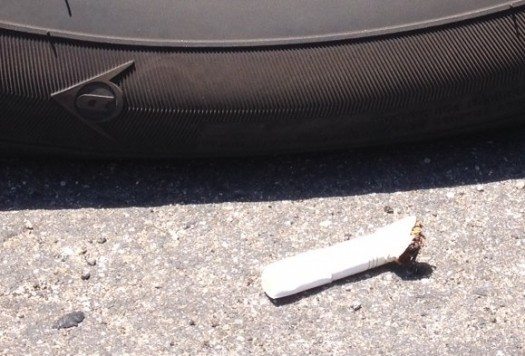
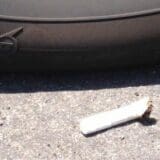
Trouble Down the Road
At the flat top grill, he was all business,
flung raw eggs dead center into the corned beef
hash like a strapping southpaw.
In the alley, with me, he was all ideas.
Said he’d be leaving soon, had a shot back east—
a tryout for the big leagues.
Said his sister would loan him a Buick convertible,
and he’d fill it with malt beer and tuna.
All he needed was a woman to hold
his cat while he drove.
I like animals, I told him. Then I dropped
my cigarette into the dusty clay,
ground it out, slow,
felt the road under my foot.
Source: Luvina, Issue 57 (December 2009).
Cece Peri’s poems have appeared in journals and magazines, including Luvina: Writers of Los Angeles Issue (University of Guadalajara),
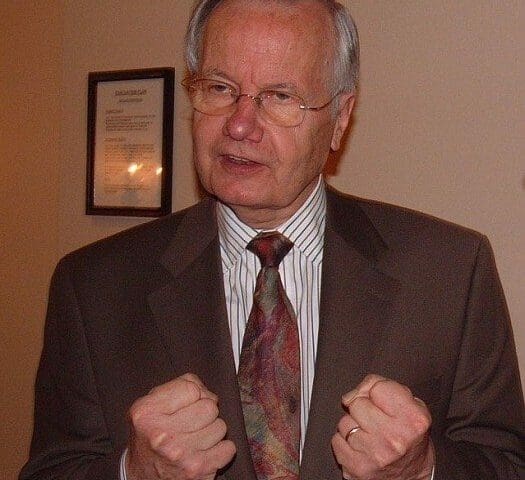
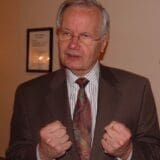
Bill Moyers, who turned 80 on Thursday, has been one of the most prolific and influential figures in American journalism. Not content just to diagnose and document corporate and political malpractice, Moyers has regularly taken his cameras and microphones to cities and towns where unions, community organizations, environmental groups, tenants rights activists and others were waging grassroots campaigns for change. Moyers has given them a voice. He has used TV as a tool to expose political and corporate wrongdoing and to tell stories about ordinary people working together for justice.
He has introduced America to great thinkers, activists and everyday heroes typically ignored by mainstream media. He has produced dozens of hard-hitting investigative documentaries uncovering corporate abuse of workers and consumers, the corrupting influence of money in politics, the dangers of the Religious Right, conservatives’ attacks on scientists over global warming and many other topics. A gifted storyteller, Moyers’ TV shows, speeches and magazine articles have roared with a combination of outrage and decency,


Read the Writing
Read the writing on the cinder block wall:
Joker, Jasper, Dopey, Termite, Tokes, Crow.
It’s not an “is it art?” debate, at all;
these are the monochromatic zip codes
of my gangster, tattooed, sharp-creased cousins.
Scribbled in black on a bus bench, strangled
names crossed out, over names crossed out again,
red under yellow under green tangled
like wire. Memo, Cowboy, Flyboy, Topper.
Neil Armstrong planted a flag on the moon;
it can’t be seen from their clearly marked world
where, if you don’t live there, you better run.
Tight fence of paint, like barbed wire that’s hidden.
Trespassed borders end lives, I’m not kidding.
Source: My Name on Top of Yours (2013),


A revamped Hollywood Film Festival aims to bring cinema and activism together in L.A.
Activists, filmmakers and audiences alike have a reason to be excited about the 2014 Hollywood Film Festival that unspools this October. Under new management, the festival, which was founded in 1997, is shifting its focus to the socially engaged side of cinema and turning the spotlight on films with a message.
Jon Fitzgerald, who first managed the Hollywood Film Festival in 2013 and has experience putting on similar festivals around the globe, will return as the event’s organizer. This year, however, a separate organization he heads, CineCause, has acquired the festival and plans to give it a decidedly different tone.
Speaking to Capital and Main by phone from a documentary shoot in Florida, Fitzgerald said CineCause plans to remake the festival into a showcase for filmmakers who want to make a change.